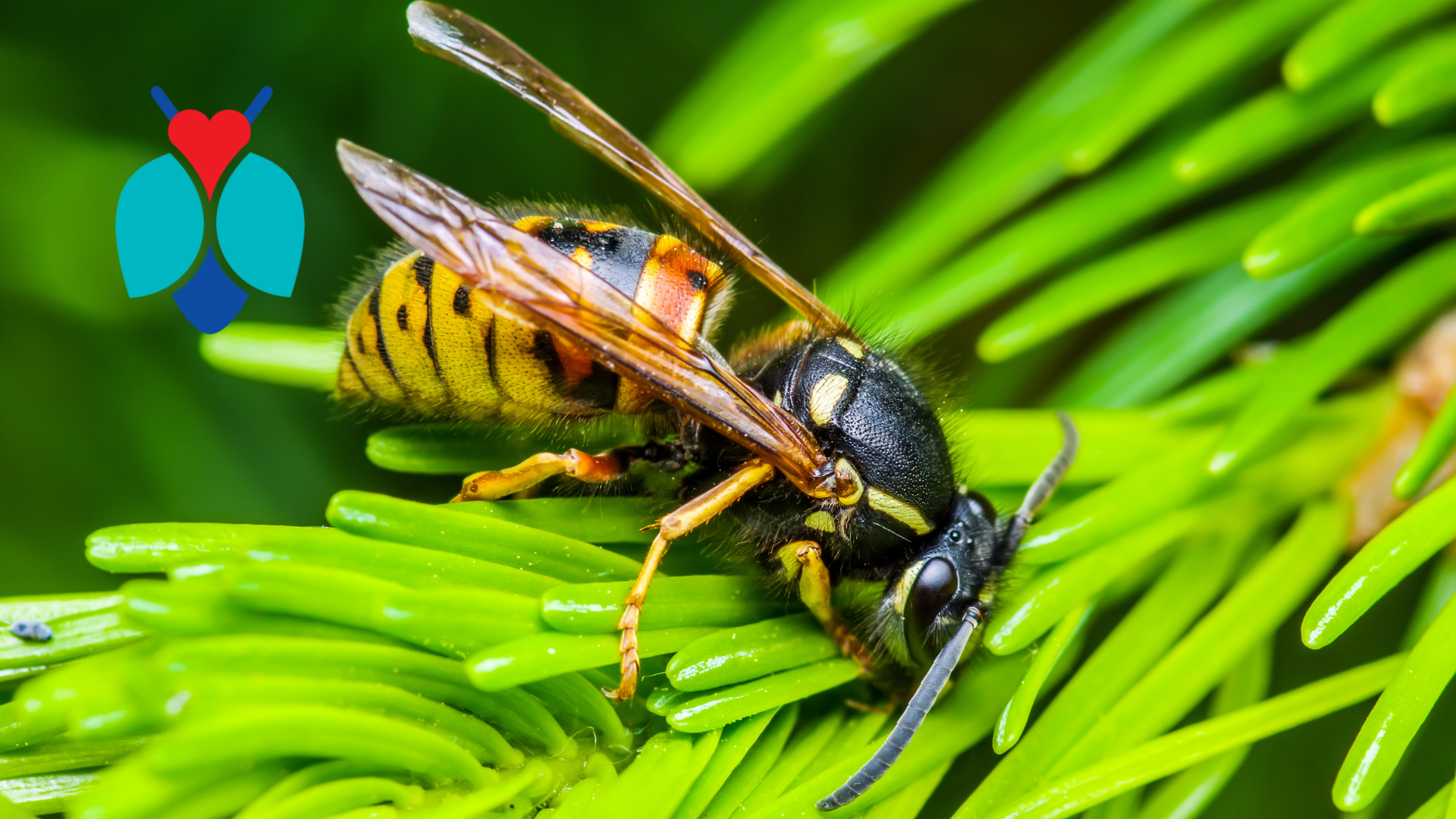Share Our Blog!
Out of all the wasps in Minnesota yellow jackets are by far the most aggressive. They also build the largest nests out of all the Minnesota wasps. One yellow jacket nest can have over ten thousand wasps living inside by the end of the summer! This blog will explain how their nests only take 3-4 months to reach these sizes.
Each spring a new nest is built from scratch. A queen wasp overwinters while most of her colony from the year before dies by freezing or starving to death. She overwinters by burrowing deep underground. She then enters into a dormant sleep state to conserve her energy which helps her survive the Minnesota winter. In the early spring, she wakes up, leaves her burrow, and starts feeding. She starts searching for sugary foods to help build her energy back up. She either finds it from flower nectar or if they aren’t blooming yet she will find sugar inside other foods. It could come from human foods or even garbage. After building up her energy she then locates a place for a nest. When inside her nest location she has to start foraging for protein-based foods. Protein is what is fed to yellow jacket larvae. It takes around 30 days for one of her eggs to turn into 5-7 adult worker wasps.
When the nest finally has adult worker wasps as their name suggests they quickly get to work. Their main purpose is to help grow the nest and colony. They do this by either foraging for food or nesting material. They find nesting material from dried untreated and unstained wood. Some of the most common wood comes from decks, posts, cedar shakes, and other outdoor wooden furniture. They land on the wood and chew thin layers off of it. They then mix the wood fibers with their saliva. This mixture makes the papery material that their nests are made out of. The nests get larger as the wasps use the papery material to build more cells to house the queen’s eggs, pupa, and larvae. The worker wasps that don’t help build the nest instead forage for food to feed the rest of the colony. A yellow jacket’s diet varies from meat, fish, and insects to plant nectar, fruits, and sugary foods.
As the summer comes to an end, their nests start to reach their full capacity. At this point in the season, the queen stops laying eggs. At the same time, there is no longer enough food to feed the entire colony. This happens around August to early October. As the temperatures start to drop it becomes harder for the worker wasps to find sugary foods to eat. This causes them to get hungry and start to slowly starve to death. At this stage, the yellow jackets are the most aggressive. On top of their aggressiveness, they also can sting people and pets multiple times without losing their stingers. One sting is capable of hospitalizing an individual depending on their body’s reaction to the venom. Even for non-allergic individuals the stings are still very painful and will leave their bodies with swelling and discomfort for multiple days.
Yellow jackets can be very difficult to treat correctly. It is highly recommended that if you have a nest on your property call a professional to exterminate it. Licensed pest control technicians have products and tools that are much more effective than any over-the-counter wasp killer products. Their nests are usually well-hidden and protected. When building them inside a structure or underground it’s impossible to know where the queen is located and how many wasps are living inside. We also have the proper safety equipment to keep us protected in case they start to swarm.
Share Our Blog!
If you have any questions or concerns or would like to schedule an appointment call or send us an email
Call Us Today! 952-404-BOGO (2646)




